Year 3 Teaching Resources
Explore printable worksheets, digital activities, games and more Year 3 resources, all aligned to the Australian curriculum! The teacher-created resources have all been designed with primary teachers and students in mind to meet the special needs of children as they transition into the middle years of their primary school education.
Carefully curated and thoroughly reviewed by the expert teachers of the Teach Starter team to ensure they're classroom-ready, our Year 3 resources can save you lesson planning time this school year with editable and differentiated options at the ready.
Teach Starter’s Year 3 resources utilise a vast array of resource types and have something for every learning area. Here's just a taste of what you'll find for your classroom!
- Spelling words and English worksheets
- Fractions activities and Maths worksheets
- Social and emotional learning activities
- Narrative writing stimuli
- Language conventions practice
- And so much more!
Are you new to teaching Year 3? Here's a look at what this year of primary school is all about!
What Is Year 3 in Australia?
Year 3 sits right in the middle of primary school for most students in Australia as the fourth year of compulsory education.
How Old Are Kids in Year 3?
The exact age of students will vary slightly by state (and birthday!), but most children in your Year 3 class will be 8 to 9 years old.
What Do Students Learn in Year 3?
Year 3 is a big one for Australian students. Many will sit the NAPLAN tests, and more than a few will hit double digits before the year is through. This is a big year for Maths between the introduction of more complex fractions and formal multiplication, as well as even more skill-building in other learning areas.
Exactly what they're expected to learn will depend to some degree on the state or territory where you are teaching, but here's a look at what your students can expect to encounter in the key areas of the curriculum!
English
Year 3 students continue to develop their reading, writing, speaking, and listening skills in their English lessons. Reading will involve more complex texts, including longer novels, non-fiction texts, and poetry.
Students will also be expected to analyse these texts more deeply, examining themes, character development, and literary techniques. Comprehension skill-building will require deeper analysis of texts and drawing inferences from what is read.
While Year 2 instruction focuses on basic writing skills such as sentence structure and punctuation, this older group of students will move toward more advanced writing skills such as paragraphing, using descriptive language, and organising ideas in a logical way.
Grammar and spelling will also become a greater focus this year, with an emphasis on understanding and applying more complex grammar rules and spelling patterns.
Maths
Fractions feature front and centre of the Year 3 Maths curriculum. Students will learn to identify, compare, and order unit fractions (those being fractions with a numerator of 1), as well as use them in simple problem-solving contexts.
We already alluded to this being a big year for multiplication, and is it ever! Year 3 students learn the basic multiplication facts — such as 2 x 2 = 4 and 3 x 3 = 9 — and they begin to use these facts to solve multiplication and division problems. They also learn to interpret and create simple multiplication and division problems.
Students will have the chance to build upon their understanding of measurement concepts from Year 2, including length, mass, and capacity. They'll learn to measure and estimate using standard units, plus how to compare and order measurements.
Maths students will expand their knowledge of 2D shapes this year, and they will begin to learn about three-dimensional shapes and their properties.
Place value is still a big part of maths, of course. Year 3 students expand their understanding of place value to include numbers up to 10,000, and they learn to read, write, and compare four-digit numbers. They also learn to use place value to solve addition and subtraction problems.
Science
Science instruction in Year 3 is more focused on building a deeper understanding of scientific concepts and their applications, as compared to Year 2. It also emphasises the development of scientific inquiry skills that will help kids become more proficient in conducting scientific investigations and communicating their findings.
Students in Year 3 learn to ask questions, plan and conduct investigations, collect and record data, and communicate their findings as part of their development of science inquiry skills. They spend a portion of the year learning about the characteristics of living things, including plants and animals. Year 3 students will have the chance to explore the life cycles of plants and animals, as well as learning about the needs of living things and their habitats.
While they're learning about things that live on Earth, they're also learning about the planet itself, exploring geological features such as rocks, soil, and minerals. They also explore heat energy and how it can be transferred from one object to another.
Last, but certainly not least, Year 3 students learn about the properties and states of matter, including solids and liquids (gasses are explored later on in primary school).
Humanities and Social Sciences
Building on the foundation set in Year 2, Year 3 HAAS lessons build a deeper understanding of historical events and concepts, as well as exploring the social and economic systems that underpin Australian society.
Students learn about the historical events, people, and places that have shaped Australia's history. They explore the concept of change and continuity over time and learn to use historical sources to investigate the past. Students also study significant cultural events celebrated in our country and how they contribute to Australia's diversity and identity.
Geography instruction will guide students as they learn about the physical and cultural characteristics of places and regions. They'll learn more about the representation of Australia as states and territories, and as Countries/Places of First Nations Australians. Students will also begin exploring Australia's neighbours such as New Zealand, Papua New Guinea, and Indonesia.
Civics instruction sees Year 3 students strengthening their understanding of what it means to live in a democratic society. They will draw upon their own personal experiences to examine why rules are important and to discuss how they can be active participants in the communities to which they belong.
Health and Physical Education
With their bodies rapidly changing, Year 3 students learn about the factors that influence their health and wellbeing, including the importance of good nutrition, hygiene, and sleep. They also learn about social and emotional health, including how to manage their feelings, develop positive relationships, and make safe and healthy choices.
In Year 3, there are a number of different types of safety on tap in lessons, including road safety, water safety, and personal safety. They develop an understanding of risk and learn strategies for staying safe in different situations.
Year 3 students also learn about the importance of being active and informed citizens in their community. They learn about the benefits of volunteering and begin to develop an understanding of the responsibilities and rights of individuals in society.
The Arts
In Year 3, students develop more advanced skills in drawing, painting, and other visual arts techniques. This includes studying the elements of art — such as line, shape, colour, and texture — and beginning to use these to create more complex artworks.
In music class, these children are learning all about musical notation and how to read and write simple music, while drama instruction explores different forms of drama, including role-playing, improvisation, and scripted performance. Students get the chance to learn about the elements of drama, such as character, plot, and setting, and begin to use these to create their own dramatic works.
- Plus Plan
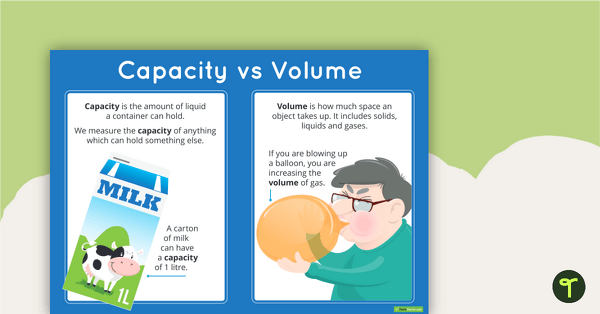
Capacity Vs Volume Poster
A poster explaining the difference between capacity and volume.
- Plus Plan
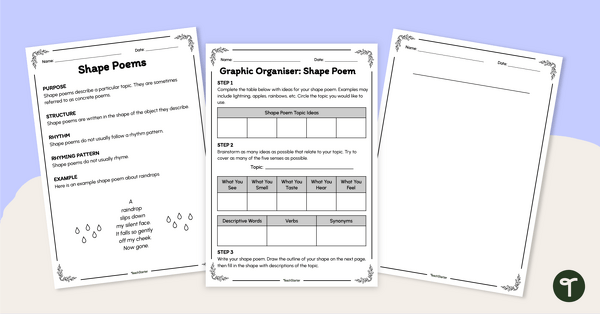
Write a Shape Poem Worksheet
Set your students up for success when writing a shape poem with this set of scaffolded, easy-to-follow worksheets.
- Plus Plan
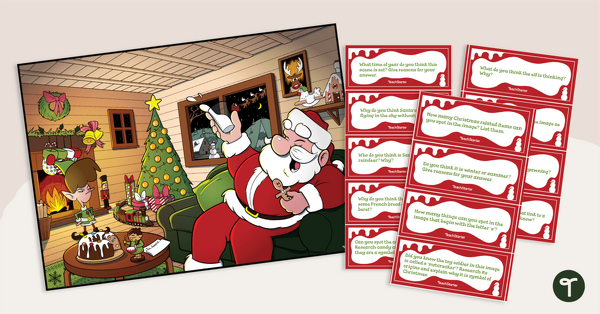
Christmas Inferencing Activity and Task Cards
Teach inferencing with a Christmas activity and set of task cards featuring a student favorite: Santa!
- Free Plan
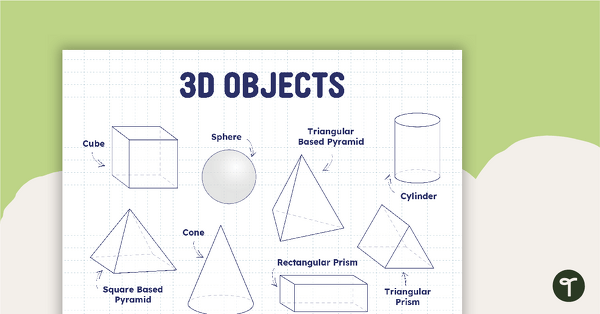
3D Objects Poster
Learn the names of some common 3D shapes with this classroom poster.
- Plus Plan
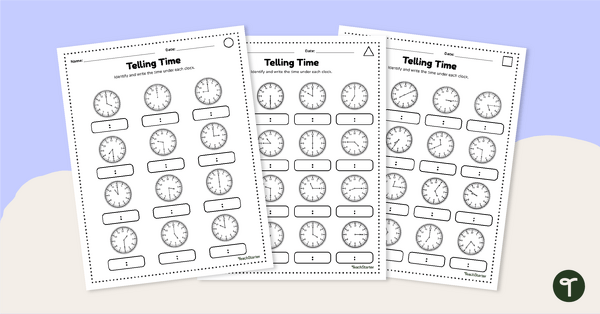
Telling Time Worksheets - Differentiated Maths
Practise using analogue clocks with this set of differentiated tell-the-time clock worksheets.
- Free Plan
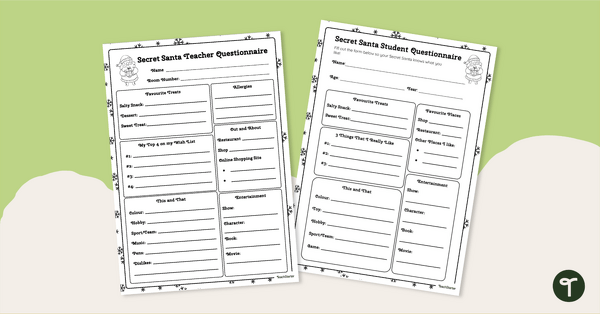
Secret Santa Questionnaire Template
Hand out a Secret Santa Questionnaire to kick off your classroom or school-wide Secret Santa Game!
- Plus Plan
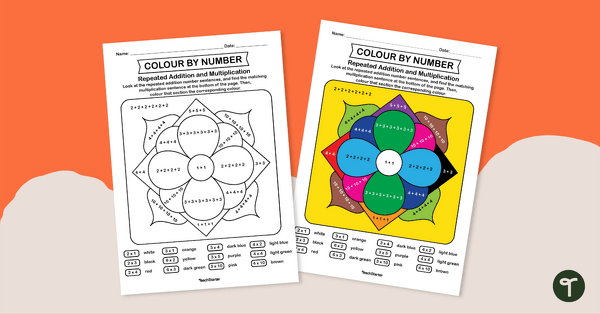
Colour by Number – Repeated Addition and Multiplication
Guide your students to connect repeated addition with multiplication by completing this colour-by-code multiplication worksheet.
- Free Plan
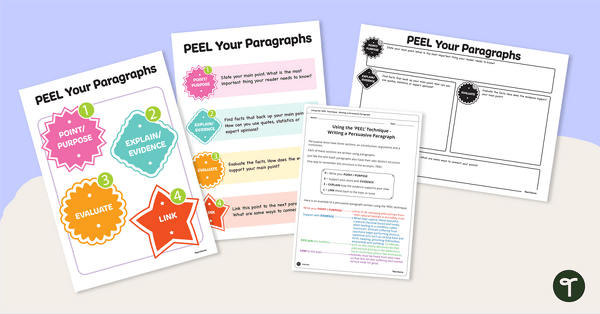
PEEL Paragraph Structure Poster and Worksheets
Explore the acronym PEEL to help with paragraph technique during persuasive writing lessons.
- Plus Plan

Inflectional Endings - Spelling with Suffixes Worksheets
Spell words with the inflectional endings -ed, -ing, -s, -es and -ies with a pack of printable practise worksheets covering inflected endings.
- Plus Plan

Year 3 Fractions – Differentiated Assessment
Use this differentiated fractions test for year 3 to assess concepts such as identifying fractions, using fraction models and determining the fraction of a set.
- Plus Plan
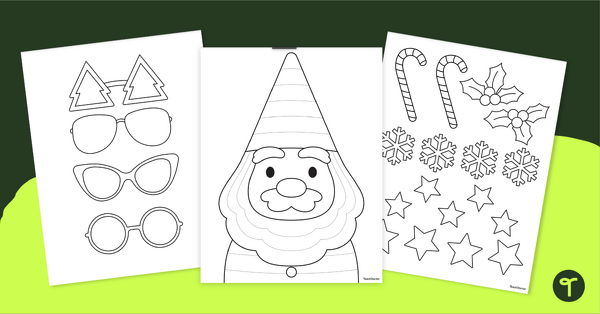
Funky Christmas Gnome Template
Get ready for Christmas with this popular gnome craft featuring a customisable Funky Christmas Gnome with cool glasses and holiday accessories.
- Plus Plan
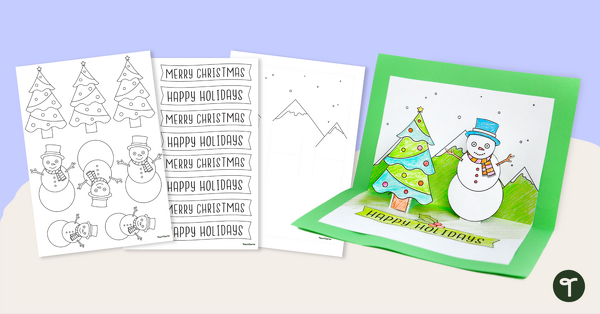
Christmas Pop Up Card Template – Snowman Printable
Create a special DIY pop up card with a printable Snowman Pop-Up card template.
- Plus Plan
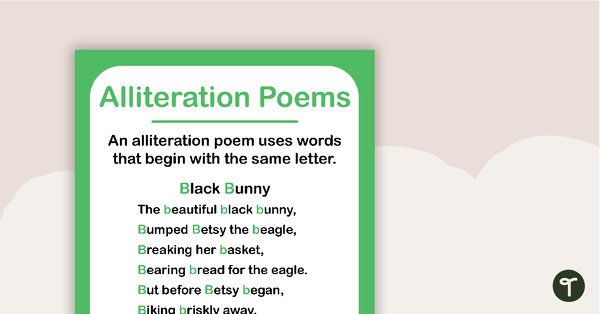
Alliteration Poem Poster and Templates
Use this alliteration poem example and accompanying worksheets to teach your students how to write an alliteration poem.
- Plus Plan
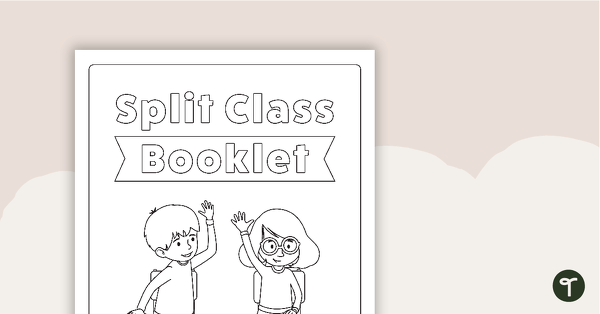
Split Class/Fast Finisher Booklet - Middle Years
A booklet to use when classes are split or as fast finisher activities.
- Plus Plan
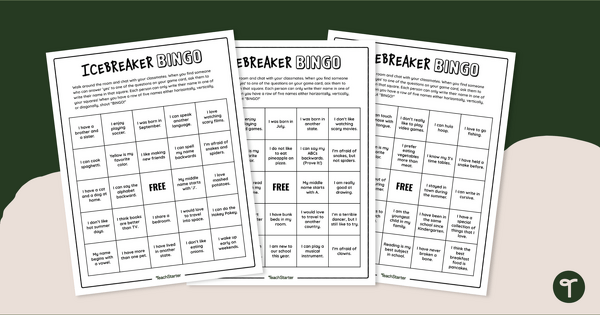
Icebreaker Bingo - First Day of School Game
Kick off a new school year with a Getting to Know You Icebreaker Bingo!
- Plus Plan
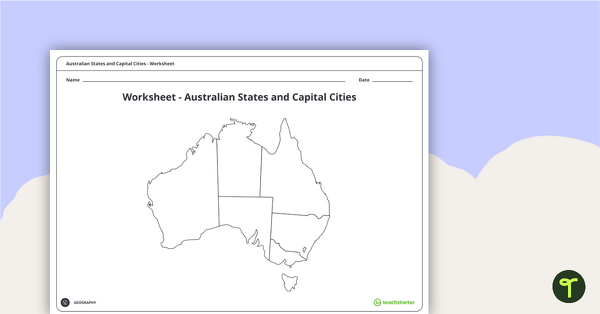
Australian States and Capital Cities Map Worksheet
A worksheet for students to use when learning about Australian states, territories and capital cities.
- Plus Plan
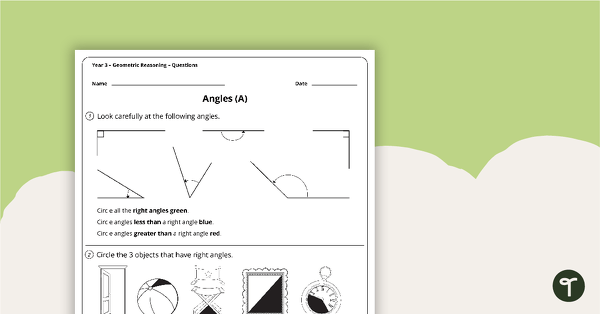
Geometric Reasoning Worksheets - Year 3
2 geometric reasoning worksheets linked to the Australian Curriculum.
- Plus Plan
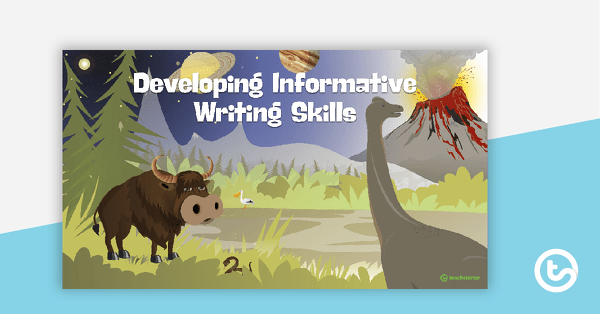
Developing Report Writing Skills Teaching Slides
Use this slide deck to teach your students about the purpose, structural elements and language features of information reports.
- Plus Plan
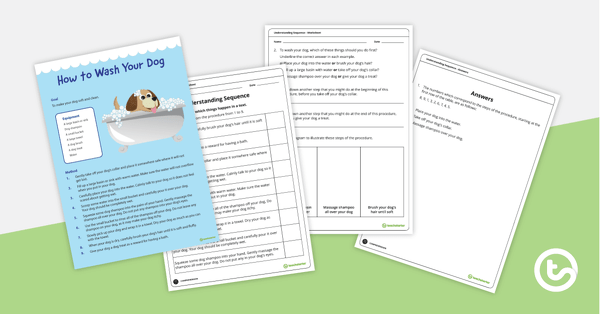
Procedural Writing Sequencing Worksheet – How to Wash Your Dog
Use this procedural writing worksheet to teach your students about the importance of sequence in procedure texts.
- Plus Plan
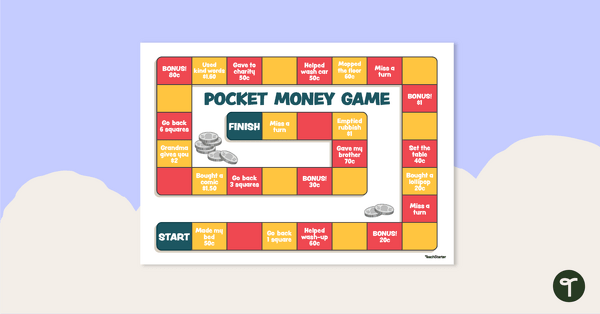
Pocket Money Board Game
Use this pocket money board game to introduce your students to the concept of money management.
- Free Plan
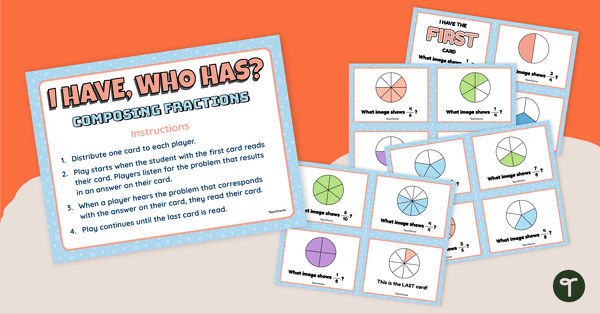
I Have Who Has? Game – Composing Fractions
Get your students to compose fractions with an engaging whole-class game perfect for lesson warm-ups or wrap-ups!
- Plus Plan

Introduction to Unit Fractions Worksheet Pack
Introduce your students to unit fractions with this set of teacher-created worksheets.
- Plus Plan
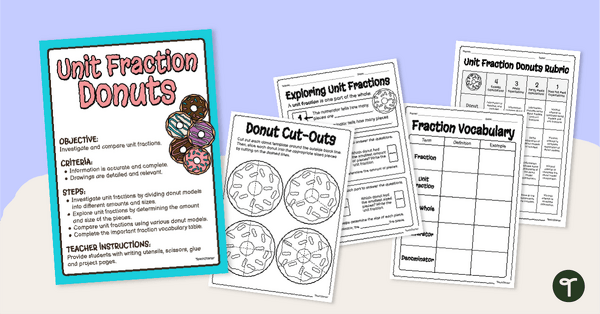
Unit Fraction Donut Investigation
Explore unit fractions in this fun donut-themed maths investigation for your students.
- Plus Plan
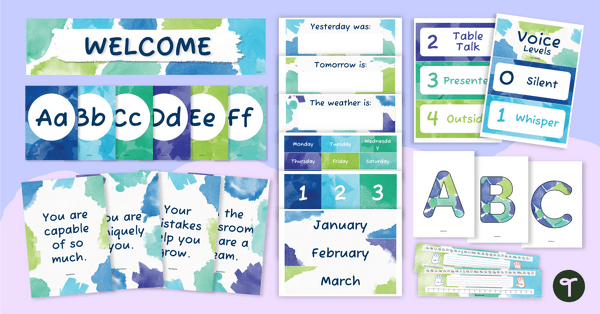
Calming Watercolour Classroom Decor Bundle
Create a calming classroom with a watercolour decor bundle full of display boards, student awards and more printable and digital calming décor for your classroom!
- Plus Plan

Christmas Maze Printables - Holiday Vocabulary
Boost vocabulary skills and bring some Christmas spirit to your classroom with a pair of printable Christmas vocabulary worksheets!
- Plus Plan

Christmas STEM – Tallest Tree Challenge
Experience hands-on STEAM concepts with your students with this Christmas Tree Building STEAM project.
- Plus Plan
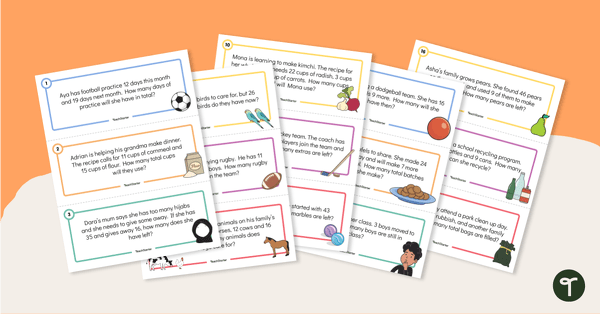
Addition and Subtraction Word Problem Task Cards (Numbers 10-50)
Use a range of addition and subtraction strategies to solve twenty word problems that contain numbers 10–50.
- Plus Plan
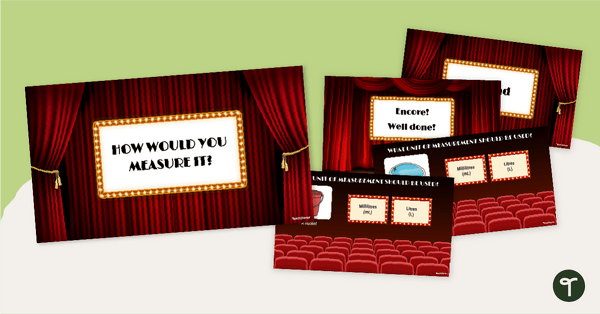
Selecting Units of Capacity — Interactive Game
Estimate the units needed to measure capacity with an Interactive Measurement Game!
- Plus Plan
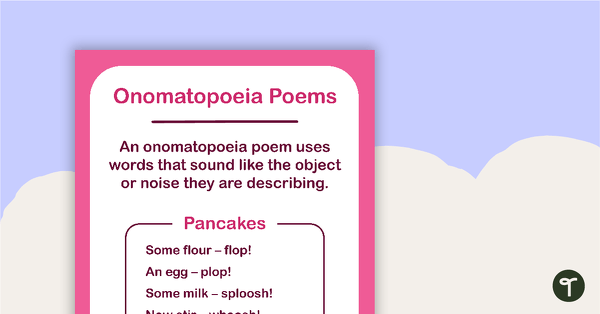
Onomatopoeia Poems Poster and Templates
Use this onomatopoeia poem poster and accompanying template to teach your students how to write an onomatopoeia poem.
- Plus Plan
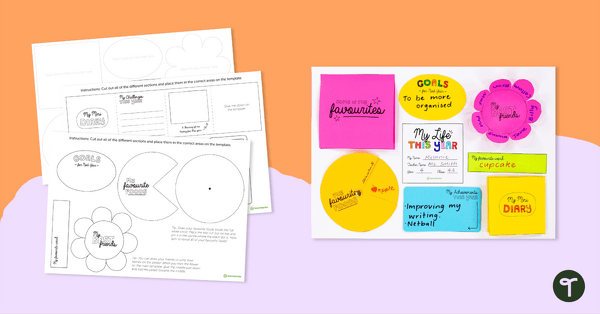
End of Year Reflection Questions- Interactive Lapbook
Create a fun lap book filled with memories using a printable lapbook template filled with reflection questions.
- Plus Plan
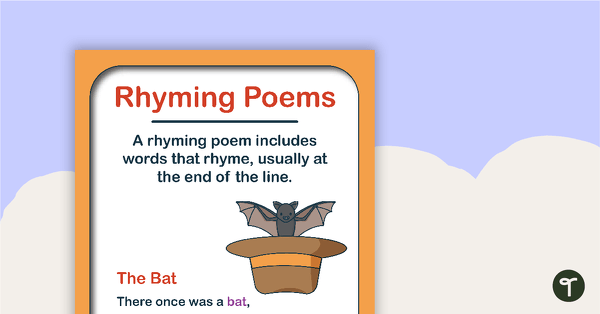
Rhyming Poems Poster and Template
Teach your students all about rhyming couplet poems with this classroom poster and accompanying student worksheets.
- Free Plan

Readers' Theatre Script - Lion and the Mouse
A script which can be used during readers' theatre or Drama sessions, aimed at students 6 years and over.